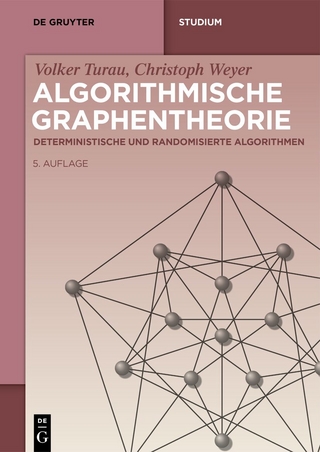
Software for Use
Addison Wesley (Verlag)
978-0-201-92478-7 (ISBN)
- Titel ist leider vergriffen;
keine Neuauflage - Artikel merken
In the quest for quality, software developers have long focused on improving the internal architecture of their products. Larry L. Constantine--who originally created structured design to effect such improvement--now joins with well-known consultant Lucy A. D. Lockwood to turn the focus of software development to the external architecture. In this book, they present the models and methods of a revolutionary approach to software that will help programmers deliver more usable software--software that will enable users to accomplish their tasks with greater ease and efficiency.
Recognizing usability as the key to successful software, Constantine and Lockwood provide concrete tools and techniques that programmers can employ to meet that end. Much more than just another set of rules for good user-interface design, this book guides readers through a systematic software development process. This process, called usage-centered design, weaves together two major threads in software development methods: use cases (also used with UML) and essential modeling. With numerous examples and case studies of both conventional and specialized software applications, the authors illustrate what has been shown in practice to work and what has proved to be of greatest practical value.
Highlights
Presents a streamlined process for developing highly usable software
Describes practical methods and models successfully implemented in industry
Complements modern development practices, including the Unified Process and other object-oriented software engineering approaches
Larry L. Constantine, a pioneer of modern software engineering practice, is highly regarded as an authority on the human side of software development. A leading international lecturer, author, editor, and consultant, he has ten books and more than 120 published papers to his credit. Under the pen name Lior Samson, Larry has just published his first novel, Bashert, a political thriller set against the backdrop of Israel’s emergence as a nuclear power. Lucy A. D. Lockwood has more than a dozen years of experience in programming and project management. An international consultant, teacher, and writer, she chairs the User Interface Design Track of the Software Development Conference. 0201924781AB04062001
I. TOWARD MORE USABLE SOFTWARE.
1. Software for Use: Usage, Usability, and User Interfaces.
Upgrading Usability.
Approaching Usability.
Changing Contexts.
2. Built-in Usability: A Usage-Centered Design Approach.
Interfacing with Users.
Elements of a Usage-Centered Approach.
Driving Models.
Coordinated Activity.
3. In Principle: Rules and Principles of Usage-Centered Design.
Design as Dialogue.
Rules and Principles.
Usability Rules.
User Interface Design Principles.
Other Rules.
Details, Details, Details.
II. ESSENTIAL MODELS FOR USABILITY.
4. Users and Related Species: Understanding Users and User Roles.
Of Use and Users.
Real Users and Others.
User Role Models.
User Role Maps.
User Roles in Action.
Structured Role Models.
5. Working Structures: Task Modeling with Essential Use Cases.
Work, Work, Work.
Task Modeling.
The Use Case Map.
Building Essential Use Case Models.
Application.
6. Interface Architecture: Interface Contents and Navigation.
Workplaces.
Interface Contents.
The Context Navigation Map.
Application.
III. CREATING THE VISUAL DESIGN.
7. Designing the Dialogue: Layout and Communication.
From Abstraction to Expression.
Communication Channels.
Screen Real Estate.
8. Practical Widgetry: Choosing and Designing Visual Components.
Buy or Build.
Iconic Communication.
Menus.
Selecting Selection Widgets.
9. Innovative Interfaces: Creative Interface Engineering and Custom Components.
Creative Engineering.
The Process of Innovation.
Instructive Interfaces.
Applied Innovation.
IV. COMPLETING THE DESIGN.
10. Expressing Solutions: Implementation Modeling and Prototypes.
Fun Stuff.
Prototypes and Prototyping.
Mapping the Models.
Implementation Modeling Illustrated.
11. Help Me if You Can: Designing Help and Helpful Messages.
Even Experts Need a Lift.
Use Cases for Help.
Access and Presentation Techniques.
Special Techniques and Modalities.
Helpful Writing.
Helpful Messages.
12. Once a Beginner: Supporting Evolving Usage Patterns.
Beyond Beginners.
Skiing the Interface.
Progressive Usage.
Supportive Interfaces.
Designing for Progressive Usage.
Progressive Usage Applied.
13. In Place: Fitting the Operational Context.
Unsound Context.
Operational Modeling.
Environmental Adaptation.
Binding Context.
Environment Profile.
Putting Context in Place.
14. Same Game, Different Fields: Special Applications, Special Issues.
Theme and Variation, Again.
Web Design for Use.
Web Wisdom Applied.
Embedded Systems Applications.
Other Special Interfaces.
15. Usage-Centered Design Applied: The TeleGuida Case.
Scaling Up.
Telephone Tag.
Gathering Requirements.
TeleGuida Users and Uses.
Toward a TeleGuida Prototype.
V. ASSESSMENT AND IMPROVEMENT.
16. Better Next Time: Improvement by Inspection and Review.
Assessing Usability.
Inspection Methods.
Collaborative Usability Inspections.
Focused Inspections.
17. By the Numbers: Measuring Usability in Practice.
Comparison Shopping.
Measured Quality.
User Interface Design Metrics.
Essential Usability Metrics Suite.
Metrics in Practice.
18. Test Scores: Laboratory and Field Testing of Usability.
History Testing.
Testing, One, Two.
Test Protocol.
Testing Tactics.
Why Test, Why Not.
VI. ORGANIZING AND MANAGING THE PROCESS.
19. Code and You're Done: Implementing Interfaces.
Objects and Interfaces.
Accelerated Development.
Visual Development of Visual Designs.
20. Using Your Users: Users in the Development Process.
Use or Abuse of Users.
Requirements Dialogue, Requirements Dance.
Going to the Source.
Using Users.
Joint Essential Modeling.
21. Getting Organized: Usability in the Larger Context.
Organizational Units.
Standards and Style Guides.
Competing Constituencies.
Experts and Expertise.
Cultural Fit.
Appendix A. Suggested Readings.
Appendix B. Eleven Ways to Make Software More Usable: General Principles of
Software Usability.
Appendix C. Glossary.
Appendix D. Forms for Usage-Centered Design.
Appendix E. Subjective Usability Scales for Software (SUSS).
References.
Index. 0201924781T04062001
| Erscheint lt. Verlag | 18.5.1999 |
|---|---|
| Verlagsort | Boston |
| Sprache | englisch |
| Maße | 242 x 197 mm |
| Gewicht | 1216 g |
| Themenwelt | Mathematik / Informatik ► Informatik ► Software Entwicklung |
| ISBN-10 | 0-201-92478-1 / 0201924781 |
| ISBN-13 | 978-0-201-92478-7 / 9780201924787 |
| Zustand | Neuware |
| Informationen gemäß Produktsicherheitsverordnung (GPSR) | |
| Haben Sie eine Frage zum Produkt? |
aus dem Bereich


